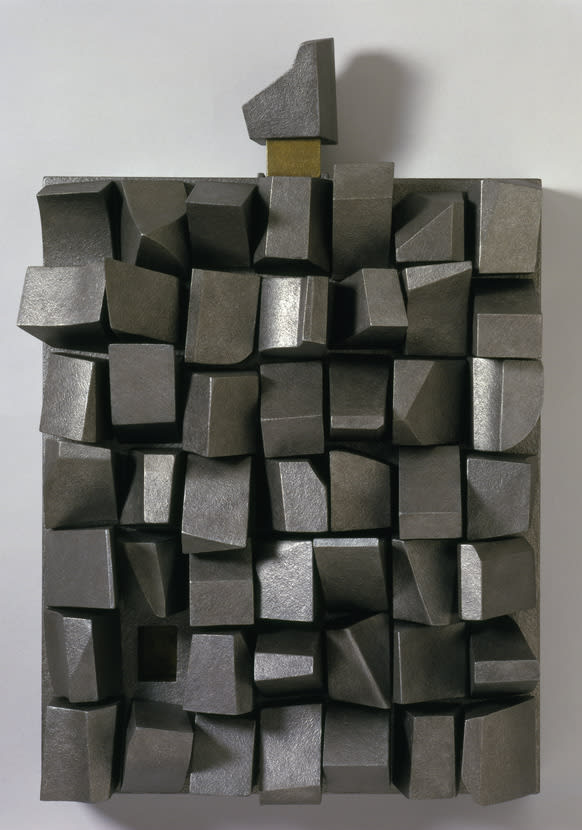
- Object Name:
- Omer Calendar
- Artist/Maker:
- Tobi Kahn
- Bio:
- American, b. 1952
- Title:
- Saphyr
- Place Made:
- United States
- Date:
- 2002
- Medium:
- Acrylic on wood
- Dimensions:
- 27 1/2 × 22 1/4 × 9 1/2 in. (69.9 × 56.5 × 24.1 cm)
- Credit Line:
- Purchase: Aryeh and Raquel Rubin/Targum Shlishi Foundation, Nick Bunzl, Goldman-Sonnenfeldt Foundation, Marvin I. Haas, and Daniel and Elizabeth Sawicki, Gifts; and Contemporary Judaica Acquisitions Committee Fund
- Accession Number:
- 2004-22a-xx
Not On View
The interval between the holidays of Passover and Shavuot, between the commemoration of the Exodus from Egypt and the giving of the law at Mount Sinai, is marked by the ceremonially counting of omer. This forty-nine day period begins on the second day of Passover--when an omer, or measure of barley, was offered at the Temple in Jerusalem--and ends on the day the wheat harvest began. Symbolically, the time between the two holidays traces the path from physical freedom (the Exodus) to spiritual freedom attained by the acceptance of law. Special calendars are used to count off the seven weeks of the omer.
Painter and sculptor Tobi Kahn has created an evocative version of the omer calendar. Like much of his work, Saphyr is inspired by the artist's personal reactions to Jewish culture and religion and is intended to encourage viewers to engage with Jewish traditions and invest them with personal meaning. The pegs were conceived as miniature houses, each with a unique shape. One can count each day by removing a single peg corresponding to the relevant day and placing it on top, or by removing all the pegs and inserting them back in one day at a time. The interior of the compartments that hold the pegs is painted gold to symbolize the spiritual journy embodied in the interval between Passover and Shavuot. The tactile nature of the pegs and the constantly changing composition fully engage the user in the performance of the ritual.
Painter and sculptor Tobi Kahn has created an evocative version of the omer calendar. Like much of his work, Saphyr is inspired by the artist's personal reactions to Jewish culture and religion and is intended to encourage viewers to engage with Jewish traditions and invest them with personal meaning. The pegs were conceived as miniature houses, each with a unique shape. One can count each day by removing a single peg corresponding to the relevant day and placing it on top, or by removing all the pegs and inserting them back in one day at a time. The interior of the compartments that hold the pegs is painted gold to symbolize the spiritual journy embodied in the interval between Passover and Shavuot. The tactile nature of the pegs and the constantly changing composition fully engage the user in the performance of the ritual.
Information may change as a result of ongoing research.